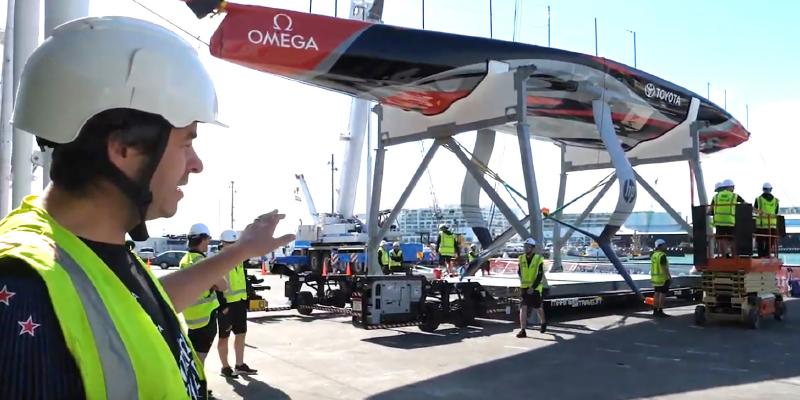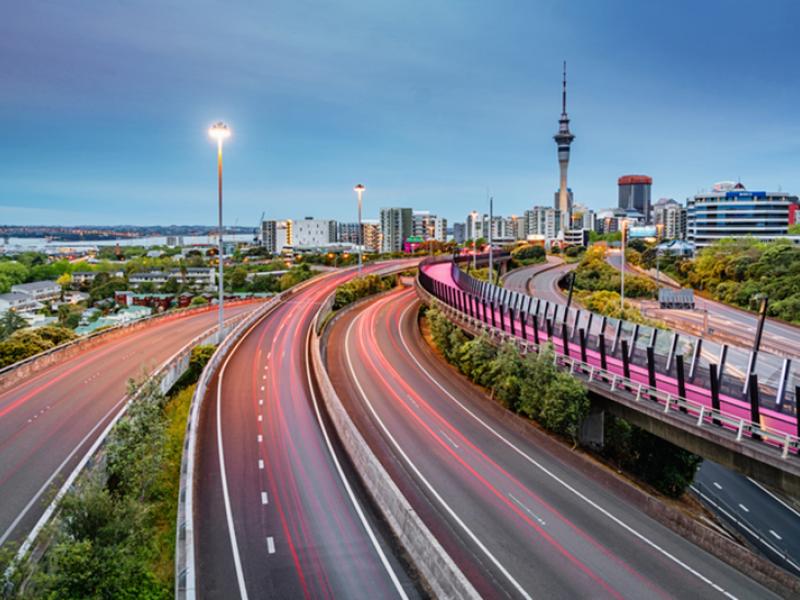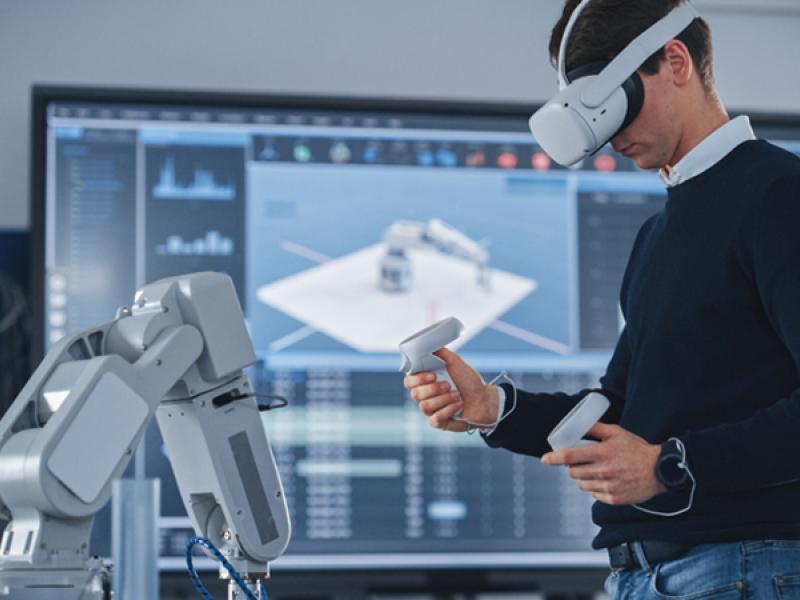The America’s Cup is as much a design race as it is a sailing race. Racing through the unpredictable waters and weather elements requires not only skill from the sailors but reliability from the state of the art technology inside the AC75 yachts.
On a sunny October day we were given access to the workshop and a behind the scenes tour of the Auckland base by Luke McAllum, Mechanical Engineer with Emirates Team New Zealand. Luke explained some of the mechanics of the boat and gave a sneak peek of the boat pre-launch, while it was getting its mast stepped.
For about the past year, Luke has been liaising with Brett Motum, maxon motor Australia Managing Director, as part of the team designing the AC75 Class yacht. maxon are an Official Supplier of DC motors and provide drive systems advice. The America’s Cup AC75 Class Rule allows the use of electric motors to operate hydraulic valves, drive clutches, rudders and foils. Teams may also use motors for driving simulator platforms and numerous test jigs.
“The America’s Cup is as much a design race as it is a sailing race. Innovation & technology is at the forefront of every team’s priorities,” said Luke.
The base, situated on the foreshore of Auckland’s harbour, has been a hive of activity. “We are still one and a half year’s out from the Cup. But every team is flat out with design and development,” said Luke.
Taking a look at Emirates Team New Zealand’s AC75 yacht, Te Aihe, it is 75 ft long and weighs around 6.5 tonnes. There are two foil arms on the boat, with a foil wing on the bottom of the arm. Each foil arm moves through 120 degrees articulation and the foils have a wing span of approximately 4 metres. On each foil wing, there is a foil flap, that the sailing crew control to fly the boat.
When the boat is in the dock, it’s in dock configuration which means both the foil arms are down at 0 degrees giving maximum stability. When the boat is in sailing mode, the leeward foil arm goes up about 60 degrees which puts the foil wing horizontal and the windward foil arm goes up about 120 degrees which lifts it fully clear of the water. This allows the crew to fly the boat using the controls inside the cockpit. The foiling control system is of course top secret.
When the team perform a manoeuvre they drop the windward foil wing down and lift up the leeward foil arm. Both of these manoeuvres take about three seconds each. The foil arms weigh 1.2 tonne each and the crew are lifting these from 60 to 120 degrees, or the equivalent of 3 metres in vertical height, all in about three seconds. The configuration is designed to give maximum stability to the yacht throughout the manoeuvres.
While in dock the team perform dock commissioning checks before the boat is in the sailing environment ensuring all system functionalities are checked.
maxon inside Ti Aihe
We are shown one of the containerised workshops, where the design & engineering team have been working with Brett Motum and his team at maxon motor Australia. “The service that they have provided has been absolutely fantastic,” said Luke. The maxon 480 W DC motor combined with a 42mm gearbox, driven by an EPOS motor controller is one of the DC motor combinations the Team have been excited to work with.
Luke said, “What we really like about this motor is the size and the power it provides for how compact it is.” While Luke would like to tell us more about the DC motors, the rest is classified information.
“The America’s Cup is all about the small details and getting that small edge over our competitors. We’d like to thank maxon very much for the support they have provided. We’re looking forward to the future and the exciting development of their products on the race yacht,” said Luke.
maxon motor Australia
Tel. +61 2 9457 7477.
maxon motor Australia is an Official Supplier to Emirates Team New Zealand. We follow the progress of their journey as Defender in the 36th America’s Cup campaign, March 2021.






